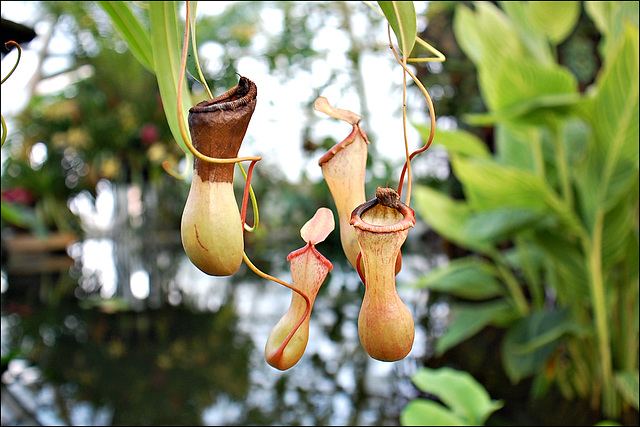What the Trees say
Daguerreotype
An Evening on the rocks
Most Beautiful wall
Most Beautiful Wall
Public Library
^ ^
Message in the Bottle
A Coconut
Beyond Good and Evil {Path of Genius (1918) by Wen…
Retired
Black
Fairest January / Schonster Januarius
Developing Intentions
Wall art
Learning consumerism
Philosophy
Mara's temptation
Language
The Hut
Shore Line
The fisherman at Captain Cook
Hawaiian brunette
Anthurium
vesper
Flowers
Smile
Falling Tree paradox
^ ^
Sentinels
Urizin
Skyhook
Siddhartha An Indian tale
Library fence
At dusk on the rocks
Chemical Clock
Flower Conservatory
Nostalgia
Base if Golden gate
Keywords
Authorizations, license
-
Visible by: Everyone -
Attribution + non Commercial
- Photo replaced on 06 Jul 2019
-
65 visits
Pitcher Plant


. . . Jonathan Smith has pointed out, in Darwin’s books about botany, there is something about Darwin’s preoccupation with the ordinary that extends beyond realism. Darwin’s preoccupation with the aberrant and the unique and the grotesque (as traces of indicators of large movements and significances) extends in the botany books to the study of plants that are truly, as Smith put it, “macabre,”
plants that trapped, killed and ate insects;. . . bizarrely ornamented, gaudy colored, fantastically structured flowers that lured insects into unwittingly effecting cross-fertilization: and. . . species with various sexual forms and multiple reproductive possibilities. While these works also embodied a realistic spirit, the literature of the day that most looked like Darwin’s botany was not the realistic novel of Trollope and Eliot, but the “sensation fiction” that flourished in those same decades, the thrilling novels full of shocking crimes and illicit sexuality by Wilkie Collins, Mary Braddon, and others. ~ Page 127

plants that trapped, killed and ate insects;. . . bizarrely ornamented, gaudy colored, fantastically structured flowers that lured insects into unwittingly effecting cross-fertilization: and. . . species with various sexual forms and multiple reproductive possibilities. While these works also embodied a realistic spirit, the literature of the day that most looked like Darwin’s botany was not the realistic novel of Trollope and Eliot, but the “sensation fiction” that flourished in those same decades, the thrilling novels full of shocking crimes and illicit sexuality by Wilkie Collins, Mary Braddon, and others. ~ Page 127

aNNa schramm, Jean have particularly liked this photo
- Keyboard shortcuts:
Jump to top
RSS feed- Latest comments - Subscribe to the comment feeds of this photo
- ipernity © 2007-2024
- Help & Contact
|
Club news
|
About ipernity
|
History |
ipernity Club & Prices |
Guide of good conduct
Donate | Group guidelines | Privacy policy | Terms of use | Statutes | In memoria -
Facebook
Twitter

What nervous systems make possible is not cell-to-cell signaling itself -- that is common -- but particular kinds of signaling. Nervous systems are fast, first of all. Except in a few cases like the Venus flytrap, plants act on a slowed time scale. Second, the neuron’s long, tenuous projections enable one cell to reach some distance through the brain or body and affect just a few distant cells; influence is ‘targeted’. Evolution has transformed cell-to-cell signaling from an activity in which cells simply broadcast their signaling from an activity in which cells simply broadcast their signals to whoever is close enough and listening into something different: an organized network. In a nervous system like our own, the result is a continual electrical clamor, a symphony of tiny cellular fits, mediated by sprays of chemicals across the gaps where one ell reaches out to another. ~ Page 23
Sign-in to write a comment.